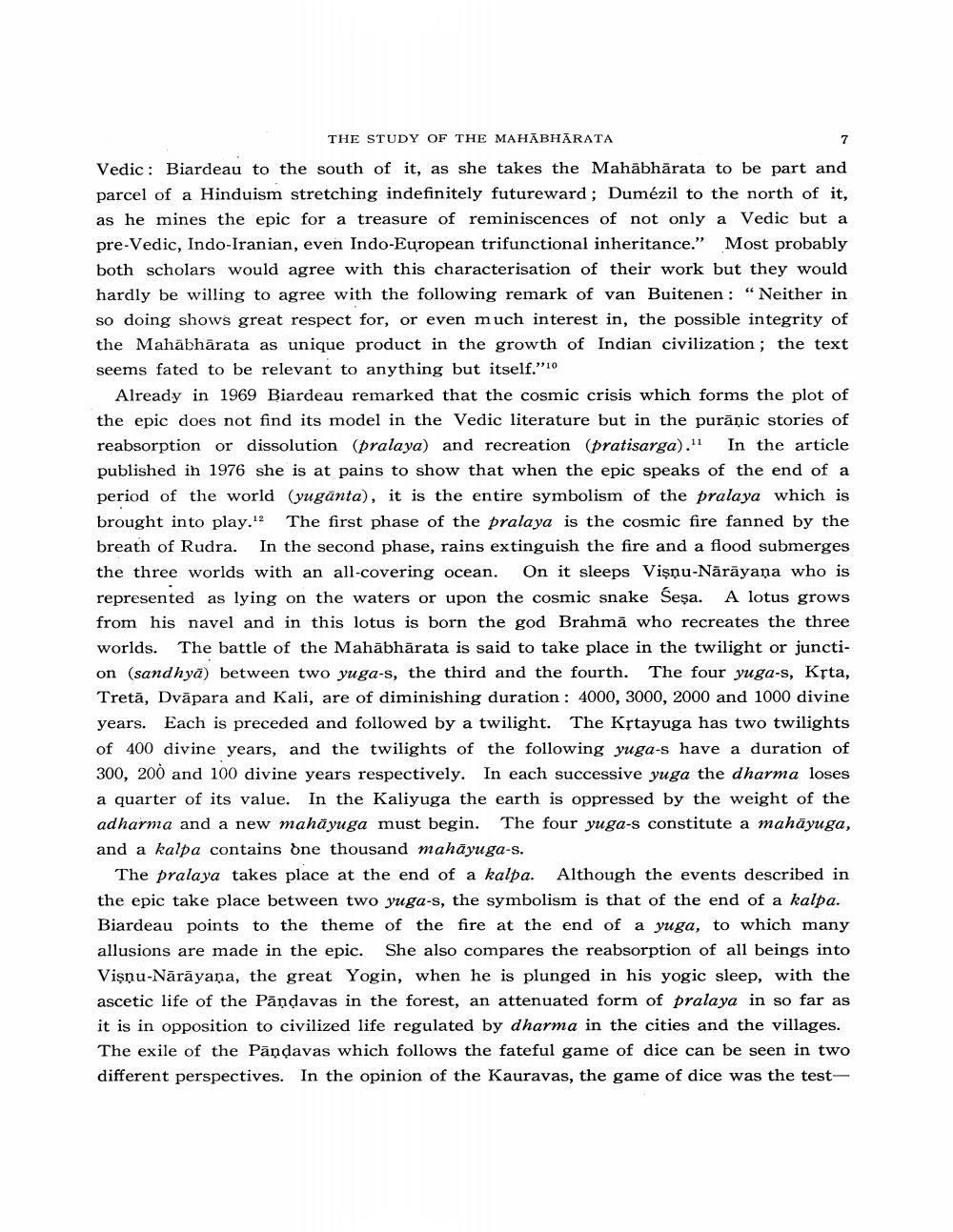________________
THE STUDY OF THE MAHABHARATA
Vedic : Biardeau to the south of it, as she takes the Mahābhārata to be part and parcel of a Hinduism stretching indefinitely futureward; Dumézil to the north of it, as he mines the epic for a treasure of reminiscences of not only a Vedic but a pre-Vedic, Indo-Iranian, even Indo-European trifunctional inheritance." Most probably both scholars would agree with this characterisation of their work but they would hardly be willing to agree with the following remark of van Buitenen: “Neither in so doing shows great respect for, or even much interest in, the possible integrity of the Mahābhārata as unique product in the growth of Indian civilization; the text seems fated to be relevant to anything but itself."10
Already in 1969 Biardeau remarked that the cosmic crisis which forms the plot of the epic does not find its model in the Vedic literature but in the purāņic stories of reabsorption or dissolution (pralaya) and recreation (pratisarga)." In the article published in 1976 she is at pains to show that when the epic speaks of the end of a period of the world (yugānta), it is the entire symbolism of the pralaya which is brought into play. The first phase of the pralaya is the cosmic fire fanned by the breath of Rudra. In the second phase, rains extinguish the fire and a flood submerges the three worlds with an all-covering ocean. On it sleeps Vişņu-Nārāyaṇa who is represented as lying on the waters or upon the cosmic snake Seşa. A lotus grows from his navel and in this lotus is born the god Brahmā who recreates the three worlds. The battle of the Mahābhārata is said to take place in the twilight or junction (sandhyā) between two yuga-s, the third and the fourth. The four yuga-s, Kệta, Tretā, Dvāpara and Kali, are of diminishing duration : 4000, 3000, 2000 and 1000 divine years. Each is preceded and followed by a twilight. The Kộtayuga has two twilights of 400 divine years, and the twilights of the following yuga-s have a duration of 300, 200 and 100 divine years respectively. In each successive yuga the dharma loses a quarter of its value. In the Kaliyuga the earth is oppressed by the weight of the adharma and a new mahāyuga must begin. The four yuga-s constitute a mahāyuga, and a kalpa contains one thousand mahāyuga-s.
The pralaya takes place at the end of a kalpa. Although the events described in the epic take place between two yuga-s, the symbolism is that of the end of a kalpa. Biardeau points to the theme of the fire at the end of a yuga, to which many allusions are made in the epic. She also compares the reabsorption of all beings into Vişnu-Nārāyaṇa, the great Yogin, when he is plunged in his yogic sleep, with the ascetic life of the Pāņdavas in the forest, an attenuated form of pralaya in so far as it is in opposition to civilized life regulated by dharma in the cities and the villages. The exile of the Pāņdavas which follows the fateful game of dice can be seen in two different perspectives. In the opinion of the Kauravas, the game of dice was the test




